The Pierce County ferry system is under stress. Island residents just want it to work
- Oops!Something went wrong.Please try again later.
A four-mile ferry ride escorts day-trippers, commuting workers, students, vehicles and — in summer months — throngs of vacationers on and off tiny Anderson Island, where a major two-lane road, flanked by forest, cuts across nearly eight square miles and a smattering of basic amenities.
Roughly 1,500 people — mostly older, white and married homeowners — live on the tight-knit and idyllic island, a popular retirement and getaway destination with a median household income of $85,625, according to the Census Bureau’s 2021 American Community Survey estimates. Nearly twice as many more people visit during the tourist season.
There’s no bridge to connect the island to the mainland terminal in Steilacoom, so the two-vessel ferry system owned and managed by Pierce County — one of four county-run ferries in Washington state — is essentially the lone way in and out. Residents who want to travel for any reason have grown accustomed to minding costs, scheduling and wait times.
When life revolves around the ferry, inconveniences come with the territory, some say.
“It’s give and take,” Anderson Island Fire Chief Jim Bixler, who’s lived on the island for 21 years, said during a recent interview in his office. “If you want to live in paradise, you got to give something up.”
Lately, residents have been forced more frequently to account for something else: What happens when the ferry is out of service?
“In recent years, it seems like there’s one boat breakdown after another, after another,” said resident Susie David. “It’s not reliable.”
On 18 different days in the past year, canceled ferry runs have been attributed to a mechanical issue, according to a News Tribune analysis of alerts on City Experiences, the ferry-tracking and ticket-purchasing app. Fifteen of those days have come in 2023.
Ferry breakdowns can leave residents, including students as young as third-graders, stranded on the island or mainland, pushing the fire department or private sailors into action to transport people across the water. The predicament is particularly nerve-wracking for residents relying on the ferry to get to medical appointments or receive health care, although Bixler assured that a fire boat or helicopter is ready in cases of emergencies.
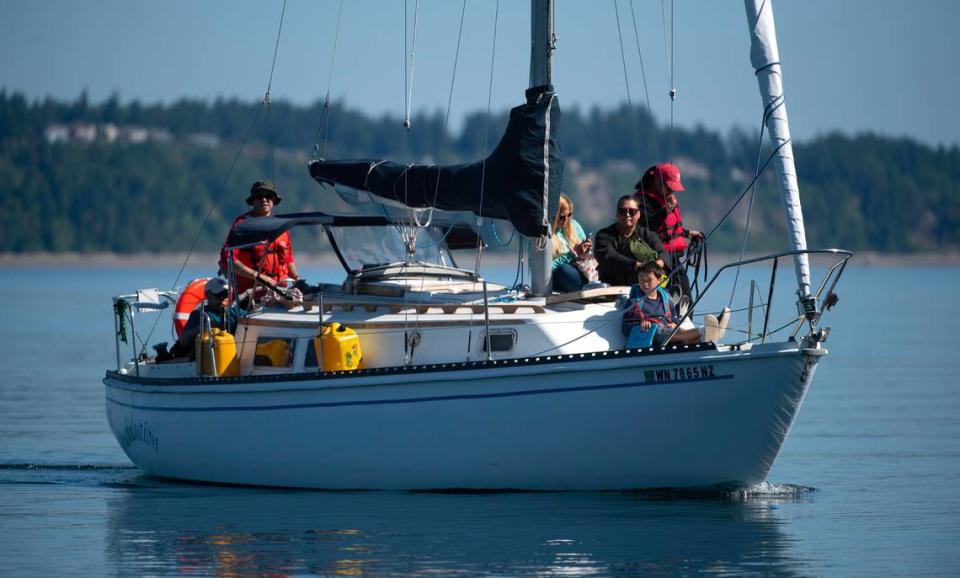
Besides serving as fodder for community Facebook groups, the apparent fragility of Anderson Island residents’ regular form of off-island travel has prompted civic-minded locals to urge the county to rethink how it manages its two ferries. County officials have acknowledged recent problems but contend that maintenance is up to date and that issues have been accentuated by the prolonged absence of a second ferry due to required dry dock inspections.
“I’ll say recently, the last six to eight months, it’s appeared to be a harder environment for our riders because we’re in our required (dry dock) period,” said Trever Threde, the county’s Airport & Ferry Administrator. “I definitely understand the view (of residents), but it sometimes appears as a bit of an oversimplification.”
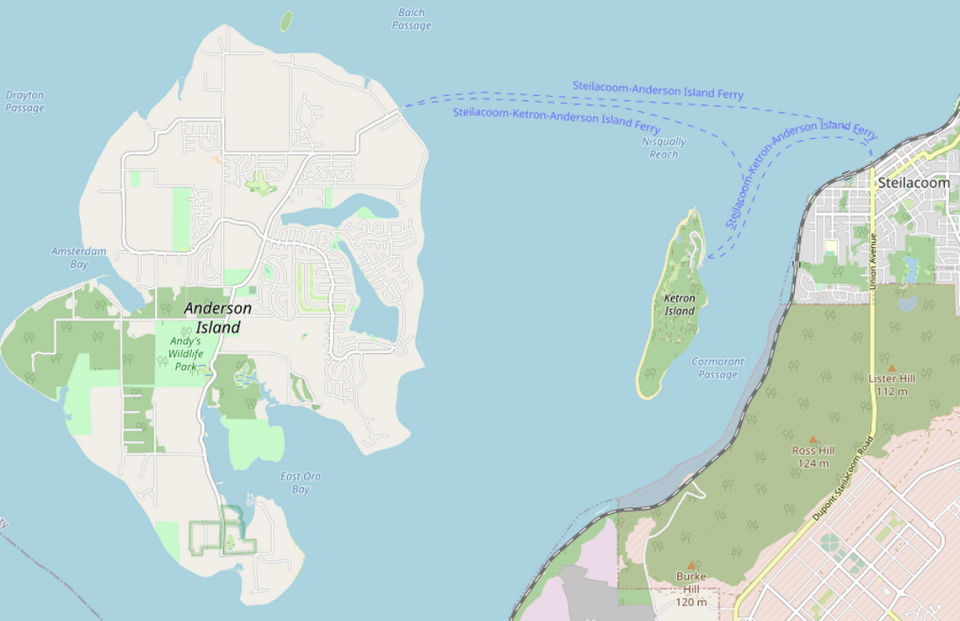
Down a second boat
Dry docking — when one of the county’s two ferries is out of commission for engine overhaul, vessel painting and major or minor repairs — occurs every four years under a Coast Guard program. The Christine Anderson boat went into dry dock for four months last fall. The county’s other vessel, the Steilacoom II, is now offline. Its anticipated return has been delayed until mid-June because of unexpected necessary repairs to an end propeller shaft, according to the county.
When both vessels are available, an issue with one can be covered by using the other. But when one boat is inaccessible and a problem forces the other out of commission, the county must call upon its roster of contractors to get a back-up, passenger-only vessel within 48 hours of suspended service.
Such a situation arose in late February when the Steilacoom II’s generator went down due to low compression on a Friday, prompting a series of cancellations over much of that weekend before the county restored service two days later after receiving Coast Guard approval to install a temporary generator.
The county had gone to its contingency plan and said it was close to securing a contracted back-up boat prior to enacting the short-term fix. The Christine Anderson would have been available because it had returned from dry dock by that point, except upon its homecoming it was discovered that its firefighting water supply pump needed to be replaced.
On the morning of May 19, contractors determined that a sensor issue caused a generator on the Christine Anderson to randomly shut down, canceling several scheduled runs until the issue was resolved a few hours later.
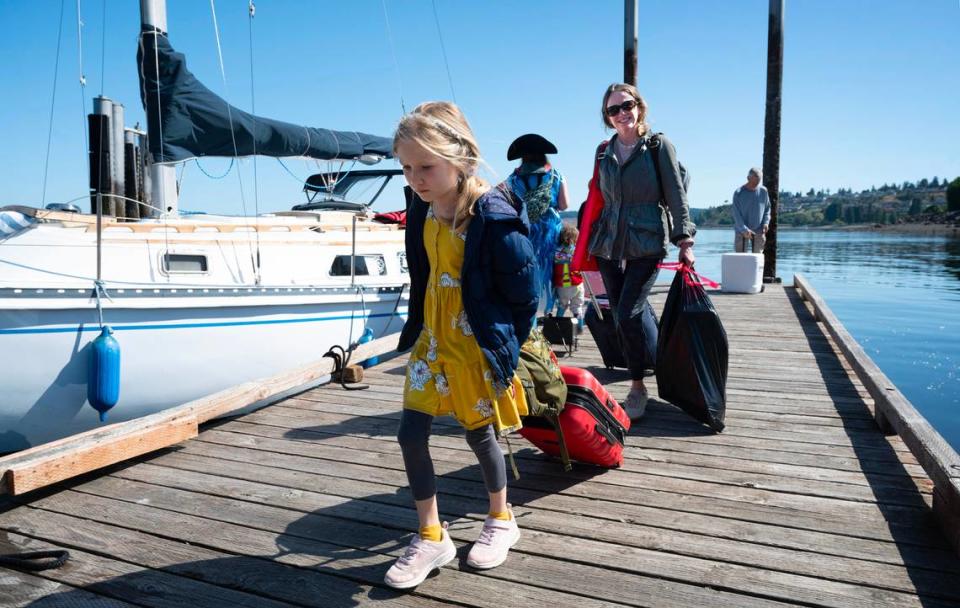
The recent snag meant Threde, who needed to respond to the problem, had to briefly postpone an interview with The News Tribune scheduled for that morning to discuss the ferry system and residents’ concerns about cancellations and delays.
He said it was “serendipitous” that both county vessels had faced generator issues only a few months apart and not a result of a lack of maintenance.
On Saturday morning, the Christine Anderson’s generator went down again. A generator part was replaced and service resumed that afternoon.
Questioning ferry upkeep
Jacob Anderson, the chairman of the Anderson Island Citizens’ Advisory Board, expressed concerns about the frequency of mechanical issues affecting the ferries in a March letter to county Executive Bruce Dammeier.
“Island residents recognize that our ferries and their infrastructure will inevitably encounter mechanical problems, but the increasing frequency of these events indicates that the existing maintenance program should be re-evaluated,” Anderson wrote in the March 17 letter, suggesting that the program appeared disjointed and too reliant on a large network of contractors.
Jen Tetatzin, the director of the county’s Planning and Public Works department, which oversees the ferry system, responded in late April, noting that back-to-back dry dock periods for the county’s two vessels had “certainly created a lot of stress on the system.”
“While staff and crew work hard to keep the boats up and running and stretch the resources allocated to this program, the reality is that breakdowns are inevitable, even with well-maintained equipment,” Tetatzin wrote in her April 29 response, according to a copy Anderson provided to The News Tribune.
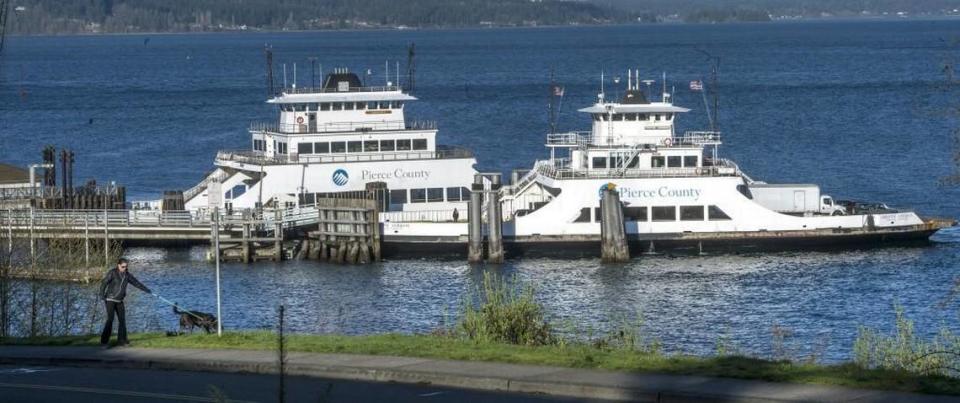
The 213-foot-long Christine Anderson was built in 1994, with capacity to hold 250 passengers and 54 vehicles. The 216-foot-long Steilacoom II was built in 2006 and can carry 300 passengers and the same number of vehicles. They’re designed to last 50 years with regular maintenance, county Planning & Public Works spokesperson Akiko Oda said.
The county runs one vessel from morning to night more than two dozen times a day during the spring, winter and fall, according to the online ferry schedule. Both boats run during the peak summer season when scheduling is expanded. Nine trips each day also arrive at or leave Ketron Island, a sparsely populated private isle in between Anderson Island and Steilacoom.
Tetatzin said that the county’s vessels and facilities are monitored by subject matter experts; all critical maintenance and inspection was up to date except for an overhaul of the main engines, expected to be done in the fall; and the only maintenance backlog was for non-critical items.
“I fully understand that the cost of unplanned repairs is significant and negatively impacts the level of service that we can deliver,” she wrote. “The County will continue to prioritize planned maintenance to reduce the risk of unplanned breakdowns, to the extent the Ferry Operations budget can support.”
Spending considerations
The ferry system is subsidized by funding for county roads. In 2022, nearly $5 million from the road fund and ferry reserves were used to cover the shortfall of the system’s $11.5 million operating and capital costs, according to the county.
Threde said the ferry system, viewed as a public road, will never not be bankrolled to some extent by road dollars but the plan is to make it as self-sustaining as possible.
“We’re not going to fall off the fiscal cliff but that is because we are subsidized by the county road fund – at this point, more than we’d like to see,” he said.
The county two years ago floated the idea of 15.5% fare hikes each year through the end of the decade, which ultimately would have nearly tripled the cost of a single ticket and significantly reduced the ferry system’s reliance on road funding. Residents were incensed. When the Pierce County Council in November 2021 approved two-year fare increases — the first hikes since 2016 — the rates were markedly lower: 8.9% and 6.2% for 2022 and 2023, respectively.
The fare increases raised the cost of an adult walk-on ticket from $5.45 to $6.21 and the cost of ferrying a driver with a vehicle under 23 feet long from $19.93 to $20.90 during the non-peak season, according to the county ordinance that authorized the new fares.
Since the new fares went into effect, the county has made substantial progress in reducing backlogged and deferred maintenance, Tetatzin wrote to Anderson. The county was also exploring whether it made sense to add a maintenance program manager to improve oversight, planning and execution of the ferries.
Sweeping through all maintenance backlogs and potentially hiring a maintenance-focused position were considerations that must be made with the budget in mind, she wrote. The county did not establish a ferry preservation fund in its most recent biennial spending plan, she added, meaning that critical repairs, maintenance and inspections must be prioritized over long-term preservation “to keep the boats safely operating.”
The ferry system is complex and, with steel boats exposed to saltwater, the harsh conditions in which it operates is “not a friendly place,” according to Threde. He said passenger safety was the top priority, while reducing interruptions to service was next.
“I’m somewhat comfortable being inconvenient to our riders if it means our riders are safe when they get on the boat,” Threde said. “We won’t operate the boat if there is a safety problem or concern.”
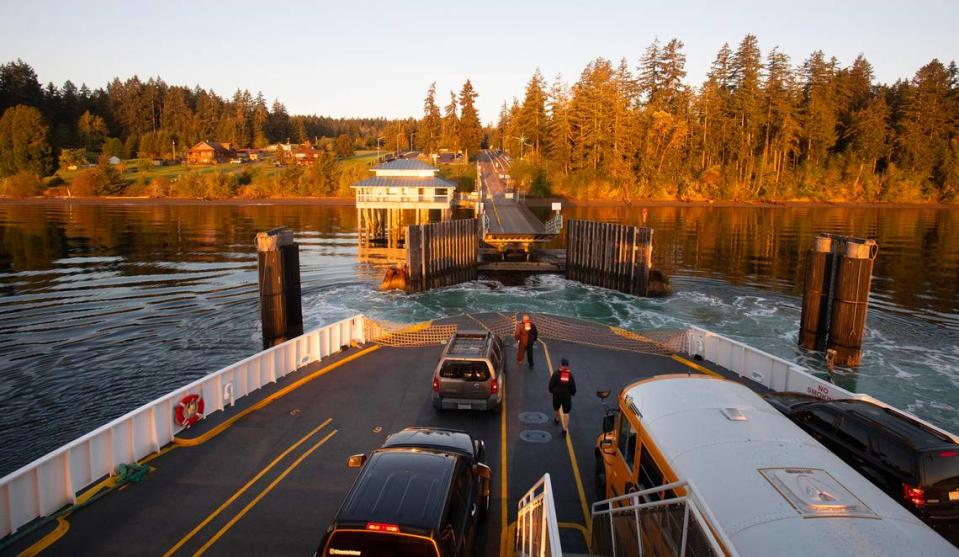
Outside operator’s control
The reliance on vessels to move on and off the island has made families re-think tolerating long school commutes, prompted residents who can afford it to rent parking spaces to keep second vehicles in Steilacoom and added unique considerations to otherwise routine travel, some say.
“I worry greatly, because if I have a doctor appointment, I have to plan at least four or five hours to get there,” 74-year-old resident Robin Sutton said. “We do need a second boat that’s working, and we need an adequate boat company.”
Any delays simply further complicate matters.
Since 2016, more than 93% of runs by HMS Ferries — the county’s contracted ferry operator — have been on time, better than its contractually obligated 90% rate, according to county data. In 2022, fewer than 3% of its runs were late — its best single-year performance in seven years.
“On-time” is considered to be when a ferry departs within 10 minutes of its scheduled time. The criteria doesn’t ding HMS for late runs beyond the operator’s control: issues such as delays caused by trains, stalled vehicles, weather, or mechanical- or maintenance-related setbacks.
While the data doesn’t specify what problems weren’t counted against HMS’s performance, it does indicate an increasing number of runs have been canceled due to issues that were out of its hands.
During the final six months of 2022, there were 90 such runs canceled, according to a News Tribune analysis of the data. In only the first three months of this year, there were 138.
Riders have taken notice of recent issues.
Nearly three-quarters of respondents in a December survey conducted by the county said they believed that the price they paid for a ferry ticket was a good value, while 92% perceived the ferry to be on time, according to county data. In March, responses to those prompts fell to 45% and 50%, respectively.
As residents prepare for the annual influx of summer tourists, concerns about future delays, long wait times and fare costs remain. Anderson has a checklist that he wants addressed.
He said the island’s community advisory board is advocating for an improved ferry schedule that considers bus routes and school start times. He also noted that he wanted the board to partner with the county to find sustainable solutions to ferry operating costs that don’t put an undue burden on residents.
“From my perspective at least, we just want to be treated fairly like other transit systems,” Anderson said. “We’ll see what happens.”

